
19 minute read
Chairman’s Message
chairman’s
MESSAGE
ark Twain once wrote that Hawaii was “The loveliest fleet of islands that lie anchored in any ocean.” I first visited Hawaii just a few years after the world had experienced its second “energy crisis”. In 1979 the Iranian Revolution had disrupted the world’s oil supply and overnight the price of oil doubled to $39.50 per barrel. Long lines appeared at gas stations again as they had during the first energy crisis of 1974 and we collectively realized the urgency of reducing our dependence on fossil fuels, not because of their global warming effect but because of the realization that there is a finite amount of oil in the world which needs to be carefully conserved. I remember in the early 80’s standing in our booth at a trade show and noticing a suntanned fellow wearing an “Aloha” shirt approaching. He introduced himself and asked: “Can you build evaporators for my heat pump water heating systems in Hawaii?”. Not knowing any better or even what he was talking about, I said “Of course!”. The result of that meeting was an introduction to those beautiful islands and to the amazing and powerful application of heat pump technology to heating potable water for the many apartments, hotels, hospitals, and military bases there. I became well acquainted with a number of pioneers involved in the business of energy conservation in Hawaii. To this day heat pumps continue to be the dominant technology used for heating water in Hawaii, reducing carbon emissions while significantly reducing operating costs and producing very attractive returns on investment. M
Hawaii and Energy Efficiency
Because heat pumps ‘move’ heat from a low temperature heat source to a high temperature level with a relatively small power input, they can produce the same heating effect as a boiler burning fossil fuel or electricity with only 1/3 to ¼ the energy input. Heat pumps use the same basic technology and components found in any refrigeration system; compressor, condenser, expansion device, and evaporator. As a refrigeration engineer this is a technology that is easy to get excited about!
To date our activities in IIAR have focused primarily on refrigeration - making stuff cold. As we start to add more focus and emphasis on energy efficiency and sustainability issues through our newly formed committee of the same name, I believe the promotion of heat pumps for water and air heating will be the result. In many facilities that depend on refrigeration, i.e. food processing plants, breweries, etc., the heating loads are actually larger than the refrigeration load. Commercially available ammonia heat pumps can achieve heating temperatures greater than 90 deg C (194 deg C), while other work on the development of ammonia / butane cascade heat pumps have demonstrated the feasibility of reaching heating temperatures as high as 125 deg C (257 deg F)! These temperatures are high enough to replace boilers in most (if not all) of our food processing facilities.
Another interesting type of heat pump is often referred to as a mechanical dehumidifier. In the same facilities that require both refrigeration and heating, many times there are also dehumidification challenges (controlling condensation, drying processes, etc.) that could be met using a mechanical dehumidifier. A mechanical dehumidifier places the evaporator coil in series with the condenser coil to first cool and dehumidify an airstream and then reheat it to a lower humidity level. The further addition of a wrap-around heat pipe with the cooling coil can reduce the compressor horsepower in many cases by half. Dehumidifying air in this way uses a fraction of the energy compared to desiccant dehumidifying which requires a large amount of natural gas or electric resistance heating to regenerate the desiccant media. Here is another technology that all of us as refrigeration engineers can easily grasp.
Electric power generation and heating activities contribute 25% of global greenhouse gas emissions as shown in the above figure published by the US EPA. In my view this represents both an obligation and an opportunity for all of us to apply what we know and do to improving the energy efficiency of our refrigeration systems and to expand our activities to include the application of heat pumps and mechanical dehumidification, thereby reducing greenhouse gas emissions. It is personally gratifying to see the interest and enthusiasm shown in the formation of our new Energy and Sustainability Committee and I want to thank all of those involved in its formation: Mike Lynch, Stefan Jensen, Pat Strine, and the IIAR Board of Directors. In closing I encourage you to get involved in IIAR committee activities. I am certain it will place you in the forefront of the important work we share of making our world a better and safer place.
MYPRO TOUCH+ Screw Compressor Package Control Panel 13.3” widescreen touch panel • Simple icon menu Remote connections and controls • Ease-of-use MYPRO TOUCH+ Screw Compressor Package Control Panel 13.3” widescreen touch panel • Simple icon menu Remote connections and controls • Ease-of-use MYPRO TOUCH+ Screw Compressor Package Control Panel 13.3” widescreen touch panel • Simple icon menu Remote connections and controls • Ease-of-use

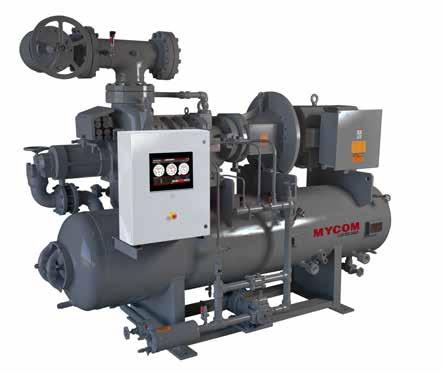
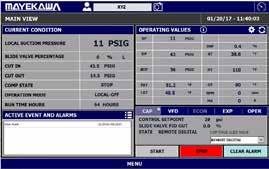



To buy MYCOM OEM parts, contact a Mayekawa office or contact the sales representative in your area. www.mayekawausa.com/industrial-refrigeration/contact-us/ MANUFACTURED PARTS OEM Genuine To buy MYCOM OEM parts, contact a Mayekawa office or contact the sales representative in your area. www.mayekawausa.com/industrial-refrigeration/contact-us/ MANUFACTURED PARTS OEM Genuine To buy MYCOM OEM parts, contact a Mayekawa office or contact the sales representative in your area. www.mayekawausa.com/industrial-refrigeration/contact-us/ MANUFACTURED PARTS OEM Genuine



info@mayekawausa.com | 615-773-2859 | www.mayekawausa.com info@mayekawausa.com | 615-773-2859 | www.mayekawausa.com info@mayekawausa.com | 615-773-2859 | www.mayekawausa.com

IIAR TECHNICAL PROGRAM UNITES INDUSTRY

ne of the most interesting and important programs at the IIAR annual conference in Orlando is the presentation of technical papers. At this year’s conference, industry experts from both the industrial and commercial sides of the business will present technical papers at the IIAR Technical Program.
The session will feature 17 papers covering a broad range of topics in the food retail and industrial space. “This year is unusual in that we have nearly double the amount of technical papers O
due to member enthusiasm,” said Eric Smith, vice president and technical director of IIAR. “You aren’t going to get this breadth and depth in any other refrigeration specific conference.”
The papers will cover several key areas, including food retail refrigeration applications, industrial use, energy efficiency, and safety and regulatory issues, Smith said.
An IIAR committee reviews paper submissions and identifies the topics that will appeal to the attendees and those that address a specific problem or quandry in the industry. “These get priority,” Smith said, adding that the association collects proposals and ideas continually. “After our annual call for papers, we will evaluate all of the abstracts submitted and determine which papers are most appropriate.”
COMMERCIAL REFRIGERATION IIAR members are continuing to discuss commercial refrigeration applications, and the association is working to provide relevant technical content, Smith said.
Caleb Nelson of Azane Inc. will present his paper entitled “Methods for

Saving Energy in Cold Storage Warehouses.” The paper provides guidance for end users, engineers, operators and manufacturers who endeavor to understand and improve the energy efficiency of a cold storage facility.
“Cold storage is most often considered an industrial application. But we know that in many situations, packaged equipment, rather than fielderected systems, are being used for small warehouse applications, and this type of equipment borders on commercial applications,” Smith said.
Nelson said the title makes the paper sound like it will be a design checklist noting the merits of things like floating head pressure, economizing, using variable frequency drives, etc., but that is not the case. “In hindsight, perhaps I should’ve titled the paper differently, implicating it to cover the ‘overlooked and misunderstood’ aspects of energy reduction instead,” Nelson said. He
TECHNICAL PAPERS AND WORKSHOPS AT A GLANCE Each of the 17 technical papers that will be presented at IIAR’s annual conference is full of specific, actionable information about the refrigeration industry. Each paper will be presented twice and there will be interpretation to ensure the sessions are available in Spanish and English. Here is a full list of the available papers as well as the presenters.
• CFD Simulation of NH3 Release and Detection in
Refrigerated Spaces (Results of the IIAR/ARF Research Project); by William Greulich, Kensington Consulting: • Methods for Saving Energy in Cold Storage Warehouses; by Caleb Nelson, Azane Inc.
• Transcritical CO 2 and Ammonia: Energy Efficiency Comparison for Industrial Refrigeration Systems; by Giacomo Pisano, Dorin USA
• Proper Installation Practices for VFDs; by Paul Jasczynski, Logic Technologies
• Development of a Mechanical Insulation Installation Guideline for Refrigeration Applications (Results of the IIAR/ARF Research Project); by Gordon Hart, Artek Engineering LLC
• Review of Accidents in the Ammonia Refrigeration Industry; by Peter Jordan, MBD Risk Management Services Inc. • Taking Your PSM Program to the Next Level - Establishing an Evaluation System; by Linda McDaniel, Americold
• Penthouse Evaporator Use with In-Rack Freezing Systems; by Dan Tippmann, Tippmann Innovation • Hot Gas vs. Electric Defrost for Standard Commercial Refrigeration Systems: An Energy Comparison; by Danny Halel, Nthalp
• Reducing Capital and Energy Costs Through Refrigeration Energy Modeling; by Andy Campbell, Leo A Daly • Compressor Lubricants for Natural Refrigeration Systems; by Glenn Short, BVA
• Permanent Refrigeration Plant Performance Optimization Using Continuous Real Time Analysis; by John Clark and David Blackhurst, Star Technical Solutions Ltd.
• Low Head Pressure Operation of Commercial Systems; by Dustin Lilya, DC Engineering
• Energy Study of Package Chiller Systems - Comparison of Natural (NH3 and CO 2 ) and HFC Refrigerants; by John Collins, Zero Zone • Technical and Technological Barriers for
Ammonia Refrigeration Thermal Districts in Colombia / Barreras técnicas y tecnológicas para los distritos térmicos de refrigeración con amoníaco en Colombia; by Bolivar Monroy, ACAIRE
• Operating Cost Comparison between Transcritical CO 2 and Ammonia Recirculation Systems in a Cold Storage Warehouse; by Chris Herzog and Peter Lepschat
• Comparación de costos operativos entre CO 2 transcrítico y sistemas de recirculación de amoníaco en un almacén de almacenamiento en frío; by Mario Mora Carli, FrigoConsult
• Application of IIAR 2 and IIAR 6 Standards and National Regulations for a Refrigeration System of a Bovine Slaughter Plant in Colombia / Aplicación de las normas IIAR 2 y IIAR 6 y regulaciones nacionales para un sistema de refrigeración de una planta de sacrificio; by Bolivar Monroy, ACAIRE Here is the full list of workshops with presenters:
• Lessons Learned in Ammonia Refrigeration: Making
Our Industry Safer; by Bent Wiencke and Doug Reindl
• Management of Change as a Key
PSM Element; by Ed Johnson, Dean Foods
• OSHA 1910.146: Keeping CSE Safe; by Mark Heuchert, Draeger Inc.
• Carrying out Critical Life Safety Plans for
Ammonia Refrigeration; by Gary Smith ASTI
• Global Market Trends in Refrigeration; by Marc Chasserot, Shecco
• Pipe Size Program Tutorial Resulting from Recent ARF Research; by Bent Wiencke, Gordon Struder and Robert Sterling
• Transcritical CO 2 Applications in the Latin-American Industrial Refrigeration Market / Aplicaciones transcríticas de CO 2 en el mercado latinoamericano de refrigeración industrial; by Mauricio Baena, Hill Phoenix South America
added that the most basic parts of the paper seemed necessary because many of the errors he sees in system sizing and performance analysis come from a misunderstanding of the fundamentals. “Energy efficiency is not just affected by component selection and P&IDs, but it’s also affected by its resilience to realworld abuses and maintenance neglect.” Danny Halel of Nthalp Engineering, will also focus on energy in his paper, “Hot Gas vs. Electric Defrost for Standard Commercial Refrigeration Systems: An Energy Compari-son.” “That should be interesting because it provides a basic understanding and descrip-tion of how defrost systems are often applied in food retail applications,” Smith said. There are more than 38,000 grocery stores operating in the U.S., and the vast majority of them could significantly lower their energy use through implementation of the solutions that Dustin Lilya of DC Engineering outlines in his paper, “Low Head Pressure Operation of Commercial Systems.”
Commercial refrigeration compressors directly account for approximately one-third of the energy consumed in a grocery store. An effective way to lower overall compressor energy usage is to operate at the lowest head pressure possible when ambient conditions and system design will allow for it, Lilya said. The paper provides a technical description of specific components, methodologies and control theories, which can often limit commercial systems from operating at much lower head pressures. Smith said he expects the paper by John Collins of Zero Zone – “Energy Study of Package Chiller Systems - Comparison of Natural (NH3 and CO 2 ) and HFC Refrigerants” -- to be particularly relevant to the industry at this point.
Collins’ paper evaluates criteria for selection of chiller systems in an ice-rink application using different refrigerants, including ammonia (NH3) R717, carbon dioxide (CO 2 ) R744 and hydrofluorocarbon (HFC) R448a. Collins said facility owner and operators, systems designers and contractors could benefit from the session.
“I feel that ammonia and CO 2 cascade systems are excellent substitutes for HFC and HFO refrigerants, particularly for warmer climates,” Smith said. “We would like to see commercial end users and other commercial system practitioners coming to the conference and learning about these types of systems. This is all in an effort to address current industry issues, build a larger commercial membership base and build on commercial system technical content.”
INDUSTRIAL END USERS Smith said IIAR remains committed to meeting the needs of industrial endusers and practitioners. “That has been our traditional core focus and will continue to be a focus,” he said. “Among several interesting papers related to industrial refrigeration, there are two papers that are being presented as a result of research funded by the Ammonia Refrigeration Foundation.”
The paper, “Computational Fluid Dynamics Simulation of NH3 Release and Detection in Refrigerated Spaces” by William Greulich of Kensington Consulting, will depict how am-monia distributes in a cold room when a release occurs. “The results of this research are being considered by the IIAR Standards Committee,” Smith said. This will include some very interesting release simulations based on CFD analysis. As part of the project, researchers completed simulations varying the location, ammonia leak rate and condition, and closed-room mechanical circulation. The three rooms, typical of ammonia refrigerated storage and processing spaces, incorporated equipment details for their operations, as well as specified heat loads and air flows to represent operating and maintenance conditions. Potential detector placement performance was evaluated by extracting data from the simulation results and application of a combinatorial examination of the total time over the experimental and set small groups of spatially distinct potential detection locations took to detect 25-parts-per-million-by-volume ammonia concentration in the model rooms. This data will be used to develop guidelines for sensor numbers and preferred location when designing a room. Gordon Hart of Artek Engineering LLC will present the paper “Development of a Mechanical Insulation Installation Guideline for Refrigeration Applications.”
“The researcher spent a couple of years traveling to various sites with various stages of insulation project construction,” Smith said. “He has developed a guideline for best practices for installation, and we think that is going to be an important guideline to ensure corrosion under insulation is mitigated and that end users get the best value for their money when they contract for an insulation or piping project.”
Hart said all refrigerated facility designers, owners and users can benefit from attending the presentation and reading the paper. “The takeaway is that the correct refrigeration insulation installation is critical to the long-term performance of that insulation system and that the performance is very important for energy efficiency, condensation control and reduction in corrosion of refrigerated pipe and equipment. Another major takeaway is that the opportunity to install the insulation system correctly presents itself only once. Once the protective jacket is installed over top of the insulation and vapor retarders, it is generally too late to make installation corrections.”
ENERGY EFFICIENCY Several of the papers presented, including some focusing on commercial applications, will provide insights into energy efficiency. “These papers discuss using pragmatic methods to analyze and adjust refrigeration systems to be as efficient as they can be,” Smith said.
Andy Campbell of Leo A Daly will present the paper “Reducing Capital and Energy Costs Through Refrigeration Energy Modeling.” He will discuss the validity and value of energy modeling as an integral part of the design process, along with highlighting the benefits of the energy modeling process in advance of capital equipment selection.
Campbell said the paper demonstrates how energy modeling will aid with the selection of capital equipment to deliver energy efficiency for the majority of the system’s operational time, rather than
efficiency for peak design conditions. These design principles, while being capable of delivering the required capacity during the maximum design day, reduce energy consumption and capital investment.
John Clark and David Blackhurst of Star Technical Solutions Ltd. will present their pa-per, “Permanent Refrigeration Plant Performance Optimization Using Continuous Real-Time Analysis.” Clark and Blackhurst said studies indicate that efficiency improvements of 10 percent to 30 percent can be anticipated in systems that have not already been opti-mized.
Existing inefficiencies add significantly to the financial cost of operation and the environ-mental impact of these systems. Inefficiencies are generally associated with a lack of infor-mation, knowledge and incentive to improve the situation. However, these barriers can be overcome following advances in computer modeling software, the reduced cost of internet access and computing power and the ease of developing accessible user outputs, allowing the automated analysis results to be delivered continuously to specified personnel.
SAFETY AND REGULATORY ISSUES Peter Jordan of MBD Risk Management Services Inc. has been collecting data related to accidents that have occurred in the ammonia refrigeration industry for more than 10 years and will present his findings in his paper, “Case History: A Study of Incidents in the Am-monia Refrigeration Industry.” “He will review what the causes are and speculate on the best way to prevent them,” Smith said.
Jordan said IIAR members have struggled to answer some basic questions regarding the industry since the earliest days of the Process Safety Management standard and the Risk Management Plan rule. Questions include how many incidents are occurring in the ammo-nia refrigeration industry, what are the consequences of these incidents and what are the most common causes of the incidents?
Each day over the past 14 years, the data on incidents has been input into an Excel spreadsheet. The information was analyzed and compared with historical incident data available from EPA’s Risk Management Plan database and an IIAR survey that was con-ducted in 2008.
“It is hoped that the analysis of these incidents will focus attention on the industry poli-cies and practices which can prevent and/or mitigate the consequences of future incidents in the ammonia refrigeration industry, thereby improving the overall safety of the industry,” Jordan said.
There are two papers related to the execution of PSM programs, Smith said. Linda McDaniel of Americold will present “Taking Your PSM Program to the Next Level - Establishing an Evaluation System,” and Jet Stiffler of JS Compliance LLC will present “How to Perform a HAZOP PHA.”
McDaniel said anyone responsible for PSM compliance at a site or company level as well as contractors who help companies with their PSM compliance or have PSM compliance software could benefit from her session. She said attendees can learn different methods/ideas for scoring PSM items to better communicate accurate compliance progress to upper management. “You cannot improve what you cannot measure,” she said.
AN INTERNATIONAL FOCUS Several technical papers and workshops will be presented in Spanish by international members. “We are integrating the international papers with the rest of the program,” Smith said. “We hope that stimulates international networking and that our international members will attend more English-speaking sessions and vice versa.” He said the technical paper presentations are interpreted in real time – utilizing the IIAR conference app – in both Spanish and English through the use of an interpreter and headsets.
CONFERENCE WORKSHOPS AND PANELS In addition to technical papers, the IIAR conference will present several industry workshops. “There are some very important topics in our workshops and panel discussions,” Smith said, adding that topics include global market trends in refrigeration, transcritical CO 2 applications in the Latin-American industrial refrigeration market and critical lifesafety plans for ammonia refrigeration facilities. Another workshop will feature presenters discussing incident-specific accidents, what happened and what could have been done to prevent them. The research panel will present proposed and in-progress cutting-edge research projects. The panel is presented by the IIAR Research Committee, which identifies and scopes projects that are necessary to gain additional understanding of the various technical challenges in the industry. “Several very important findings have resulted from recent research that have a practical effect on safety and efficiency,” Smith said.
Smith noted that code and regulatory advocacy is one of the most important functions of IIAR. “Jeff Shapiro, IIAR’s code consultant, and Lowell Randell, IIAR’s director of government affairs will present their always-popular annual review of IIAR’s efforts and progress in these arenas. Their work is ultra-critical for the use of ammonia refrigeration as it relates to government agency regulations,” Smith said, adding that an update from OSHA, EPA and the Department of Homeland Security will also be provided.
The closing panel will discuss the use of manual hand valves as they are applied to Occupational Safety and Health Administration’s mandated lockouttagout programs. “We will discuss a survey that was conducted over the past year related to the topic, the results of that survey, the relevance of the OSHA standard, and what IIAR is considering to address for industry guidance,” Smith said. “We hope people come and ask questions and provide their perspectives.”
Smith said ammonia refrigeration and other natural refrigerants are positioned well to address refrigeration needs in the future. “Natural refrigerants have a lot of advantages including positive environmental effects, reliability and energy efficiency that cannot be overlooked.” Smith said. “Of course, there are also intangible benefits like the ability to advertise sustainable practices.”
THE ULTIMATE IN INDUSTRIAL REFRIGERATION INTRODUCING by Heatcraft Refrigeration Products

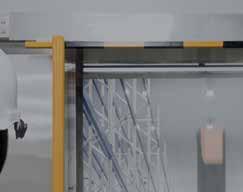
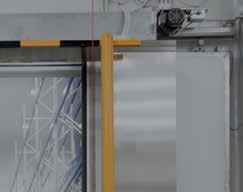

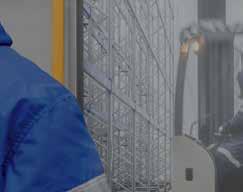
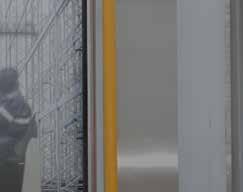

At Heatcraft Refrigeration Products, we know that industrial refrigeration applications come in all shapes and sizes.
Introducing MAGNA™ Industrial Refrigeration, the latest addition of largecapacity cold storage equipment solutions for the industrial refrigeration market.
The MAGNA™ Industrial Refrigeration product line represents the: ▪ Ultimate in engineering and manufacturing capabilities ▪ Ultimate in range of industrial grade, long-lasting products ▪ Ultimate in lead times and warranty ▪ Ultimate in project-specifi c support










